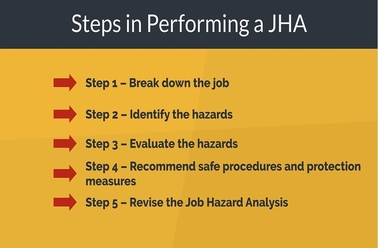A Job Safety Analysis (JSA), select jobs or job tasks, identify its hazards or potential hazards and integrate precautions to reduce risk. also known as a Job Hazard Analysis (JHA) - Available in English or Spanish.
Course Overview
In this course, you will learn about Job Hazard Analysis (JHA), also known as Job Safety Analysis (JSA) and why they are important You will also learn how to break down a task into job steps and identify potential hazards, and the ways in which risks or hazards identified during JHA can be reduced or eliminated.
Most safety programs require employees to know how to identify existing and potential risks to the health or safety of workers, and what measures are necessary to reduce, eliminate or control those risks and hazards. A Job Hazard Analysis can fulfill some of those needs.
One of the many values of a JHA you will discover, is that through the process of how to conducting a Job Hazard Analysis, you can reduce incidents and help in the development of safety documents such as procedures, inspections, and orientations along with other safety processes.
What you will learn
- Identify the primary elements of Job Hazard Analysis, including its benefits and goals.
- Define what jobs should be analyzed, what a job step is, and what should be included in a job steps.
- Recognize ways to limit or reduce hazards that cannot be eliminated.
- Explain how to develop recommended procedures and control measures.
- Identify examples of recommended actions, including questions to ask when developing procedures and control measures.
- List the types of things that may create potential hazards and recognize how to record potential hazards.










